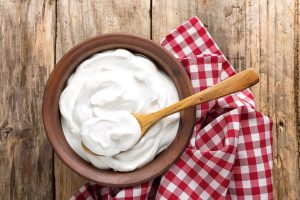Introduction: Living with a Milk Allergy can present unique challenges, requiring individuals to be vigilant about their dietary choices and lifestyle. This comprehensive guide aims to provide essential information, practical tips, and insights for those navigating the complexities of life with a milk allergy. Dairy Products to Avoid: Understanding the Culprits Living with a Milk
Introduction:
Living with a Milk Allergy can present unique challenges, requiring individuals to be vigilant about their dietary choices and lifestyle. This comprehensive guide aims to provide essential information, practical tips, and insights for those navigating the complexities of life with a milk allergy.
Dairy Products to Avoid:
Understanding the Culprits Living with a Milk Allergy necessitates an awareness of common dairy products that may trigger allergic reactions. These include:
- Butter and butter fat
- Cheese, including cottage cheese and cheese sauces
- Cream, including sour cream
- Custard
- Milk, including buttermilk, powdered milk, and evaporated milk
- Yogurt
- Ice cream
- Pudding

Image by: yendex.com
Foods with Milk in Them:
Check Labels and Ask Questions In addition to avoiding obvious dairy products, it is crucial to scrutinize food labels for hidden sources of milk proteins. Some foods that may contain cow’s milk protein include:
- Au gratin dishes and white sauces
- Baked goods such as bread, cookies, crackers, and cakes
- Battered and fried foods
- Cake mix, cereals, and chewing gum
- Chocolate and cream candy
- Coffee creamers
- Creamed or scalloped foods
- Donuts and granola bars
- Gravies and certain Indian dishes
- Malted milk and margarine
- Mashed potatoes
- Meats, both canned and processed
- Nougat found in some candies
- Salad dressings
- Sherbet

Image by: yendex.com
Ingredients with Milk:
Decoding Labels To navigate food labels effectively, individuals with a milk allergy should familiarize themselves with ingredients that indicate the presence of milk proteins. Some such ingredients include:
- Artificial butter or cheese flavor
- Casein or caseinates
- Diacetyl
- Curd, ghee, and hydrolysates
- Lactalbumin, lactalbumin phosphate
- Lactose, lactoglobulin, lactoferrin, lactulose
- Protein powders and recaldent
- Rennet, tagatose, and whey or whey products

Image by: www.anveya.comir
Distinguishing Lactose Intolerance:
Understanding the Difference It is crucial to distinguish between lactose intolerance and a milk allergy, as these conditions have distinct characteristics and effects on the body. Lactose intolerance primarily involves difficulty digesting lactose, the sugar found in dairy products, leading to symptoms like stomach pain, gas, and diarrhea. On the other hand, a milk allergy involves the immune system treating dairy proteins as foreign invaders, triggering a range of symptoms beyond digestive issues, such as wheezing, vomiting, and diarrhea.
Tips for Living Well with a Milk Allergy:
Navigating Nutritional Challenges Managing a milk allergy requires individuals to find alternative sources for essential nutrients provided by dairy products, such as calcium, protein, and vitamins D and B12. Considerations include:
- Exploring dairy substitutes like soy, rice, oat, and almond milks that are fortified with calcium and vitamin D
- Choosing non-dairy alternatives for ice cream, chocolate, cheese, and yogurt
- Opting for margarines made with vegetable oil instead of butter
- Seeking guidance from a registered dietitian to develop a well-balanced eating plan
Practical Living Strategies:
Being Proactive in Daily Choices Living well with a milk allergy involves more than just managing dietary choices. Practical strategies include:
- Exercising caution with unlabeled foods, particularly from salad bars, deli counters, and bakeries, as they may inadvertently contain allergy triggers
- Maintaining consistent label reading habits, as food companies may change ingredients over time
- Consulting with healthcare professionals about safe formula options for babies with a milk allergy
- Scrutinizing cosmetics, creams, and ointments for cow’s milk content, as some personal care products may contain allergens
- Checking medications for whey, a milk-derived ingredient that may be present in certain pharmaceutical formulations
Conclusion:
Successfully navigating life with a milk allergy requires a combination of knowledge, vigilance, and proactive choices. By staying informed about potential sources of milk proteins, adopting alternative dietary options, and incorporating practical strategies into daily life, individuals can lead a healthy and fulfilling life while effectively managing their milk allergy.

















Leave a Comment
Your email address will not be published. Required fields are marked with *